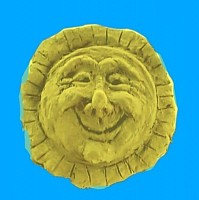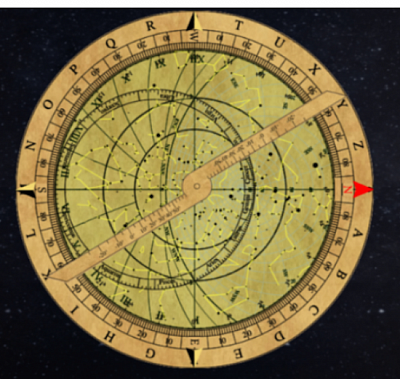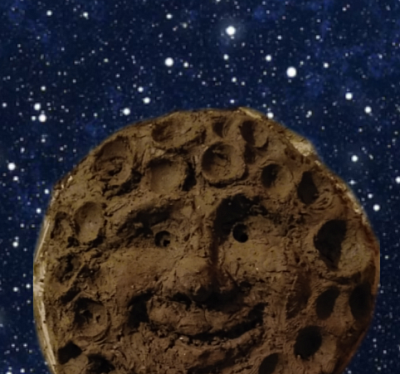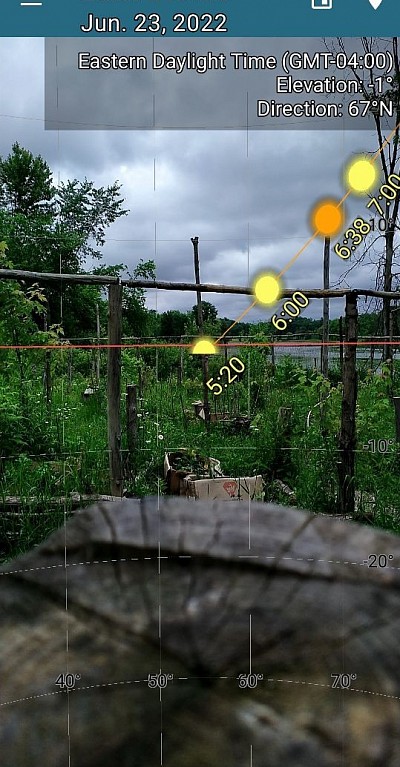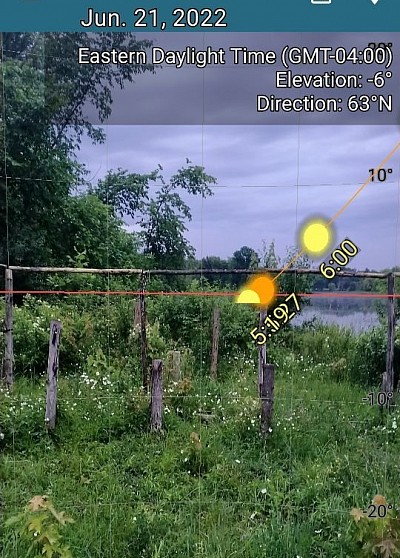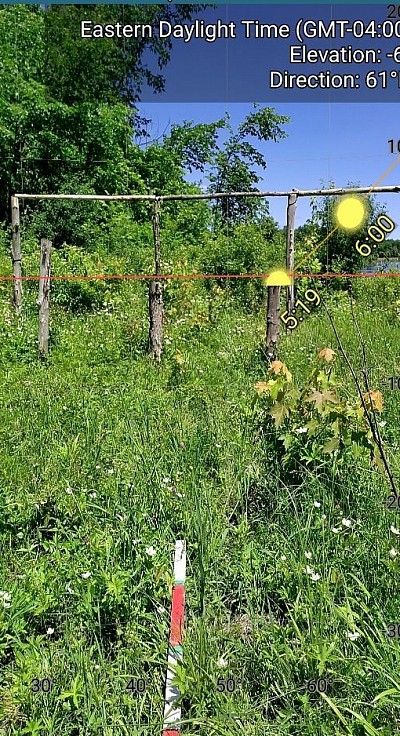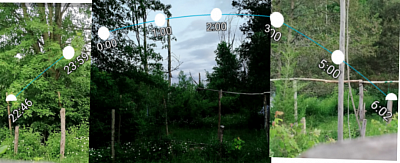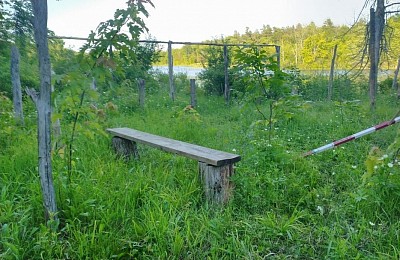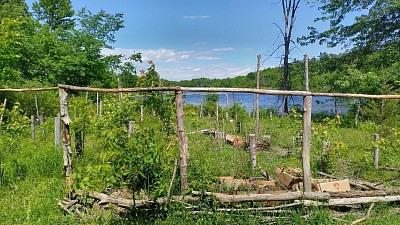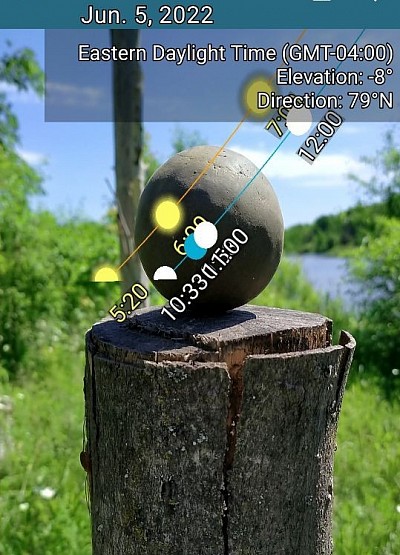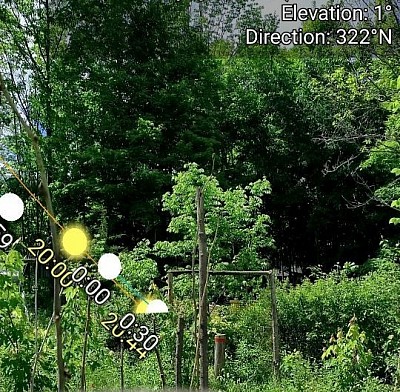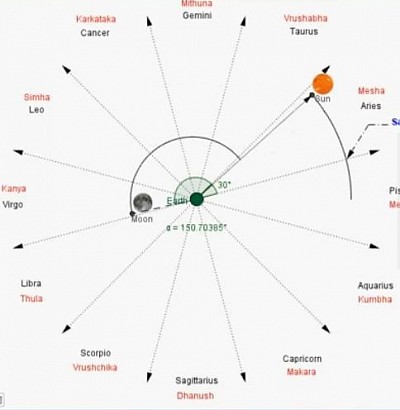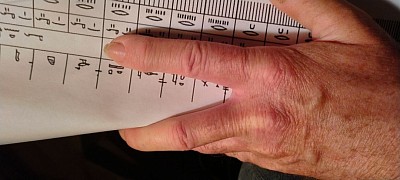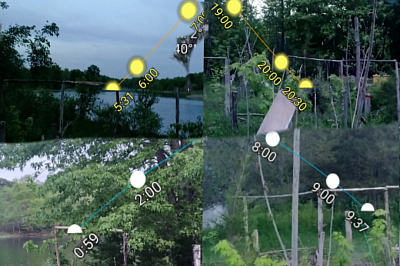A Blog about Henge-keeping
A better start (maybe).
Next time, start with a print of a compass and hammer long thin nails at the north south east and west positions.
Enlightenment Though Hengekeeping
A Henge is such a good timekeeping device I use it to time the difference between thought and action. There is a huge difference between the two. My thinking is instantaneous and my action is glacial.
St. John's Night
Its the longest day and shortest night, in the Sun's annual rock back and forth across the sky. Though the Earth continues to move at fantastic speeds, the Sun sets at the same time until June 30th.
Solstice Eve
Almost like Christmas Eve, Solstice Eve is when you'll find Hengekeepers scurrying around preparing for Solstice. This is just a trick because real Hengekeepers are actually preparing for Saint John's Night.
Most people think that summer Solstice happens on just one day. Part of the solstice does happen on one day when the
Lunar Standstill
Lunar Standstills are the Moon's version of a Summer or Winter Solstice.
Uses for Stickhenge.
Gardening at Stickhenge is coming along nicely. The Stonehenge layout works so well as a garden I half wonder if that what it was used for. The European wood henges look quite a bit like mine. If they were gardens I bet they could grow a lot of food. Most or all of it could be transplanted berry bushes and leafy greens like dandelion or medicinal herbs or mushrooms. Beekeeping is another use.
My intention with Stickhenge is to make it as involving as possible. Lately I've been thinking about it being used as a theatre.
A day for experiments.
Continuing my scale model idea, I made a model Moon out of clay. It is based on a plumb Bob that was part of an Egyptian measuring device that was found in a star shaft in the Great Pyramid of Cheops.
I had been using the device as a measuring stick in Stickhenge but when I read in Vedic Astrology that the timing of Tithies could be worked out with a pendulum I thought about the plumb Bob and its possible uses.
Today I was placing the plumb bob or Moon model in a place in the Henge that is similar to the Moon's place in the sky. It works quite well.
I think it supports my scale .model idea. The planet models can be placed at scale distances and correct angles. The observer would have to keep track of the scale distance and make sure the object was the correct size.This is where they might have discovered the elipse and possibly measured it. They would have already noticed the Moon getting bigger and smaller.
I'll follow the Sun.
I was a bit hung up on trying to figure out Stonehenge for a while particularly what size each of the elements had to be to work in scale. I have found some interesting things. In the mean time il concentrate on sighting daily Sun positions. When I have that information I can mark it on the Henge.
Nearly all figured out......again.
At least once a year I reach a point when I think I have Stonehenge figured out. This diagram has some possibilities though. The Lunar and Solar "orbits" have the same proportions as Stonehenge. The Moon's orbit is the same as the Sarsen Circle and the Sun's position is the same as the Aubrey Holes circle. I'm bothered by how the 30 of the Zodiac works with the 56 of the Aubrey hole circle. I'll go with the division of 30 and see how it goes. 56 works by itself and divides into months weeks and days, but doesn't add up to year. It's hard not to get bedeviled by a technical problem. It's better to use a system that works and figure out why later. In this case though, it's so close to the Aubrey Holes it's tempting to solve that problem. It would be almost as important as figuring out Stonehenge itself. I know I'm close but I also know that calculation can't solve the problem yet. I can't calculate. The answer has to come from the realm of "aha". I've seen it but I can't apply it just yet. I have to find the analog. At least this fits with my early ideas about using.Stonehenge as a scale model of the solar system.
Vedic Astrology
I'm trying to learn about Vedic Astrology. In the mean time I'm continue my idea of Stickhenge as a measuring device.
I got a new app called "Ship's Bell" that rings on half hours like a ship's Bell that marks the length of watch. Vedic Astrology uses the same timing system so I'll learn the watch as well as Astrology.
Measure for Measuring
I took more rise and set positions today. I decided it would be best to take the lintels down and mark them with Cubits. Then I realized there was a problem with my comparison of Egyptian digits and primitive inches. What I thought was a common measuring unit was one Egyptian Digit too short. This would have been discouraging if it hadn't proved that Neolithic Britons used inches and feet. The Cubit can be basically the same except it's digit is based on a finger divided in three at its joints. Each jjoint is one inch so each finger equals three inches.They occupy the same space as four Egyptian digits so you get the same result. Four palms equals one foot which is equal to one degree when viewed from 54 feet. Twelve degrees is the distance of the centre of the poles in Stickhenge. This is a Lunar measurement. The Solar measurement is 15 degrees which is the distance that the Sun travels in one hour. Ten degrees is one third of a month, or one third of the width of a Zodiac Constellation. A month in this calendar is 30 days long, so each degree equals one day. This is where I feel that a personal connection to Henge Time begins. When you know the position of the day you can also know the position of the Sun. You will know which direction to face to find the rising Sun. In this way you can be mindful of the day.
Once you have the Sun figured out, you might want to try the same thing with the Moon, and then the Planets.Over time these traffic patterns in the sky will become more familiar and less taken for granted.
I will be making the celestial objects a part of my daily meditation routine. The best times to do this is at the rising, Zenith and setting of the celestial objects.
Lunar and Solar Readings Taken
I took a step closer today to making Stickhenge into my place of observation and meditation. I took readings on the rising and setting of the Sun and Moon between their respective posts. When I was puzzling over how I was going to mark the positions, (I first thought of sticks in the ground) I realized that it would be easiest and most accurate to mark the position on the lintels. It would also be easier if the ancient measuring system was marked on the lintels.
